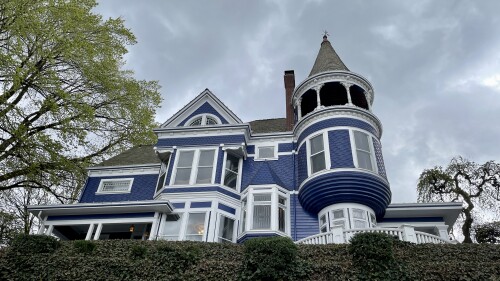Last month, we examined the history of Vanport and its lasting influence on modern-day Portland. Today, we’re placing another piece of that puzzle — the Albina District, which spans north + northeast neighborhoods from Eliot to Piedmont, and was once its own city.
We spoke with Portland State University’s Dr. Darrell Millner, an expert on African Americans in the western movement, to help us grasp what Albina represents, most notably, as the historic heart of our city’s Black community.
The story starts on the other side of the river, where Union Station and the booming railroad industry, along with bustling restaurants + hotels, drew Black workers to what we now think of as Old Town. “But as the river became tamed with the bridges, and as the Black community became larger, then it jumped the Willamette River,” Dr. Millner said.
Despite redlining + other racist practices that restricted where they could live, Black Portlanders established a community in Albina in the physical sense, where they could own a home, earn a living, and foster a shared culture.
“Although it was pretty extreme and harmful public policy on the one hand, it gave opportunities for Black people in that community to be businessmen, to be lawyers, to be doctors, to lead their churches,” Dr. Millner said. “They could create the kind of life that the physical Black community made possible. That also gave them some measure of insulation and protection from a very hostile environment that they would experience, had they needed to live in a white community. That’s the other side of the coin.”
But as Portland progressed beyond the midpoint of the 20th century, deeply rooted prejudices continued to impact Albina.
“Many people who came to Oregon were both anti-slavery and anti-Black. If you have to define Oregon’s pioneer roots, that’s probably the best way to do it,” Dr. Millner explained. “They were against slavery, not necessarily because of what it did to the slave, but because of the competition that represented for whites who had to work for a living.”
Under the guise of “urban renewal,” Portland’s ruling political and civic elite began to dismantle Albina — despite the best efforts of grassroots organizations — claiming the area was “blighted” to encourage landlords to evict tenants. Homes were demolished to make way for the Veterans Memorial Coliseum, Interstate 5, and the expansion of Legacy Emanuel Medical Center. Discrimintation led to decay, ultimately giving way to gentrification in the 1990s.
“Once gentrification ended the physical Black community in Portland as it has, those kinds of opportunities disappeared. And those kinds of protections and that kind of comfort zone, culturally speaking, physically speaking, psychologically speaking, disappeared with it,” Dr. Millner said. “There are still many Black people who lived through that time period who recognize what was lost and can’t find anything that really replaced it, or that performs the same kind of functions that were provided by that physical Black community.”
Coming to terms with this reality is a painful but necessary step toward righting these wrongs. At the forefront of this movement is Albina Vision Trust, a nonprofit that seeks to honor the neighborhood’s past by transforming what exists today into a socially and economically inclusive community. It’s values are:
- Honor what was, what happened, and what could be
- Heal ourselves and our communities
- Reconnect to the river
- Build a place to live, work, and play
- Integrate arts in the process and product
- Be intentionally remarkable
The organization’s Community Investment Plan seeks to bring displaced residents, property owners, and innovative thinkers to the table to redesign, re-imagine, and reconnect the community through mixed-income housing, businesses, and the arts. To support its cause, you can make a contribution or volunteer.







